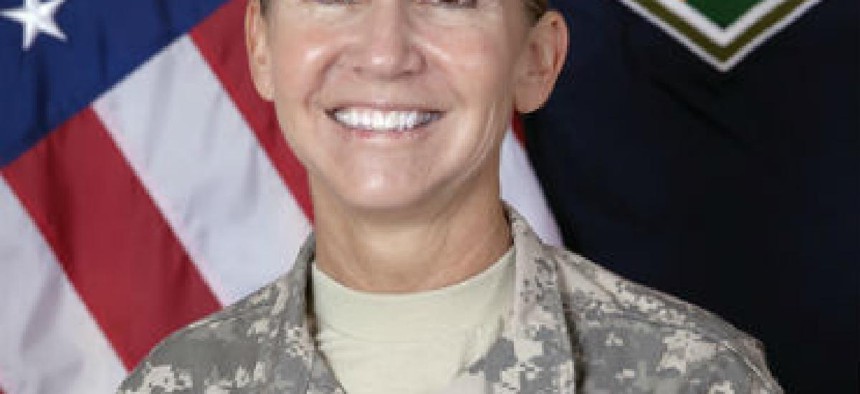Army wants cyber capability everywhere

The Army's cyber director said cyber, electronic warfare and information operations must be integrated into warfighters' doctrine and training.

Brig. Gen. Patricia Frost said the Army's "cyber mission force is on track," but the service lacks a coherent electronic warfare strategy.
The Army's new cyber director said the service is still struggling to make cyber, electronic warfare and information operations tangible to warfighters.
Speaking at West Point's annual Mad Scientist Conference, Brig. Gen. Patricia Frost said the Army's "cyber mission force is on track," but the service lacks a coherent electronic warfare strategy.
"For the last decade-plus, EW's been very focused on [countering improvised explosive devices], which I'd say is a soda-straw view of where electronic warfare needs to be," she added. "If we say we are going to fight in a contested and congested electromagnetic spectrum, what does that mean for the Army, and are we organized and equipped to fight well in that environment?"
She added that the Army cannot continue to rely on old technology for new fights and instead needs to ask how technology can help in the near term and the future.
"We have a force strategy today that I believe is just not efficient because it is not organized correctly," she said.
Frost, who has an intelligence background, previously served as deputy commanding general for operations at Army Cyber Command, so she is passionate about signals intelligence, cyber and electronic warfare.
Her goal is to adopt a more comingled and integrated approach in which the Army treats cyber and electronic warfare as intrinsic to the warfighting mission rather than as separate entities.
"I don't believe you can separate it anymore...because of where we've gone in this environment," she said. "To sit there and say it's separated -- I'm having trouble with that."
A particular challenge is making the theoretical and virtual aspects of cyber and electronic warfare accessible for warfighters and their commanders, she added.
In the past, commanders knew the electronic signals and spectrum they were going to encounter in the battlespace, and the U.S. military dominated that space. "Now the complexity of understanding what could be attacking or collecting on us is a little bit more difficult, and then how do you protect the outer soldier in the vehicle?" she said.
Frost said warfighters need to understand "that when they roll out, there are ones and zeros, there is information flowing that we didn't experience...in the past."
The Army must address that new environment in its training, she told FCW.
"We're lacking a lot of the institutional materials that would help [young officers] -- the doctrine, the field manuals that would help them at least grasp it," she said.
She acknowledged that it's difficult to conduct cost-effective training exercises that highlight what it's like to fight in a contested and congested electronic environment. But the training needs to demonstrate "that they can actually be denied being able to operate a certain system because then they will go, 'Ah, I get it! You just made it impossible for me to execute my warfighter function.'"
"We don't do this for EW's sake or cyber's sake," she said. "It's all part of the warfighter and maneuver [mission]."
Frost added that there is substantial buy-in from leaders who understand the importance of cyber and electronic warfare, but she reiterated that the constant challenge for her directorate is to make highly complex and often abstract concepts tangible and clear to maneuver units.
At the same time, she said she is concerned that the Army has yet to fully analyze the future threats it will face and determine the emerging growth requirements and then prioritize the needed investments.
"I don't believe we have done that deep dive," she said.
NEXT STORY: The Strange Way People Perceive Privacy Online





